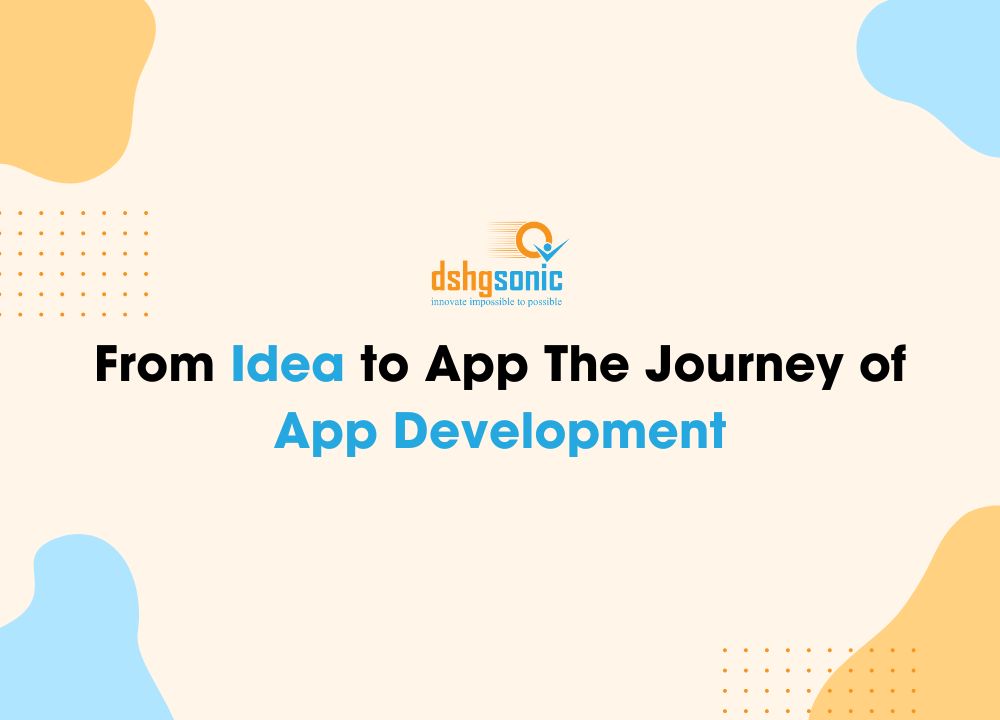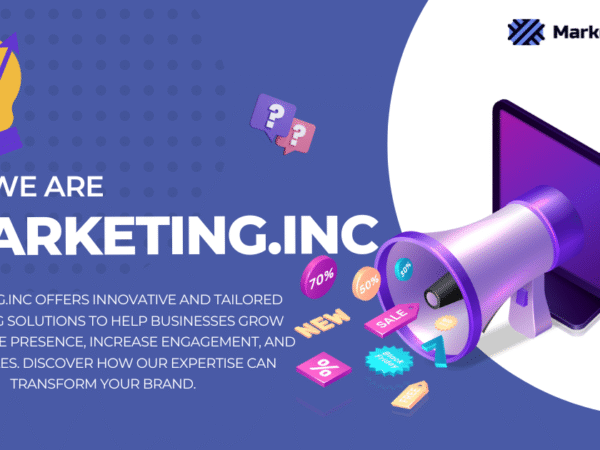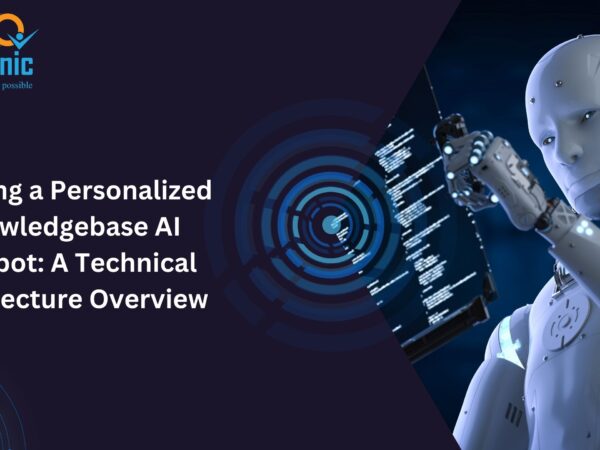App development is a fascinating journey that transforms a mere app idea into a fully functional mobile application. This journey involves several stages, each critical to the success of the final product. In this article, we will explore the comprehensive process of app development, highlighting key elements and best practices along the way.
Conceptualization
The journey begins with the conceptualization phase. Here, the focus is on refining the app idea. It’s crucial to have a clear vision of what the app will accomplish and how it will serve its intended audience. This phase involves brainstorming sessions, identifying the core features, and defining the app’s value proposition.
Market Research
Once the idea is clear, the next step is market research. This involves analyzing the competitive landscape, understanding the target audience, and identifying market trends. Market research helps in validating the app idea and ensures there is a demand for the app. It also aids in identifying potential challenges and opportunities in the market.
User Experience (UX) and User Interface (UI) Design
A critical component of app development is the User Experience (UX) and User Interface (UI) Design. The goal here is to create an app that is intuitive, engaging, and easy to navigate.
Wireframing and Prototyping
During this phase, designers create wireframes to outline the app’s structure and layout. Wireframing is a visual guide that represents the skeletal framework of the app. Following wireframing, a more detailed prototype is developed. Prototyping allows for interactive simulations of the app’s interface, providing a tangible sense of how the app will function.
Minimum Viable Product (MVP)
Before diving into full-scale development, it’s wise to create a Minimum Viable Product (MVP). An MVP includes only the core features necessary to solve the problem for its users. This approach allows developers to test the app in the market with minimal investment and gather valuable user feedback for further improvement.
Agile Methodology and Software Development Life Cycle (SDLC)
Developing an app is an iterative process best managed through Agile Methodology. Agile emphasizes flexibility, continuous improvement, and collaboration. The Software Development Life Cycle (SDLC) encompasses various stages: planning, designing, developing, testing, and deploying.
Front-end and Back-end Development
Front-end development involves creating the part of the app that users interact with. This includes designing buttons, forms, and other visual elements. Back-end development, on the other hand, focuses on the server-side, databases, and application logic that supports front-end functionalities. Both front-end and back-end development are crucial for creating a robust and functional app.
App Testing and Quality Assurance (QA)
Before launching, rigorous app testing is conducted to identify and fix bugs. Quality Assurance (QA) ensures the app meets the desired standards and provides a seamless user experience. This phase involves various types of testing, including functional, usability, performance, and security testing.
Debugging
During testing, developers will inevitably encounter bugs. Debugging is the process of identifying, analyzing, and resolving these issues. Effective debugging is crucial for delivering a smooth and reliable app.
Deployment
Once the app passes all tests, it’s ready for deployment. Deployment involves submitting the app to app stores like Google Play and the Apple App Store. Each platform has its own set of guidelines and requirements, which must be meticulously followed to ensure a successful submission.
App Store Submission
App store submission is a critical step that involves preparing all necessary materials, including app descriptions, screenshots, and promotional graphics. Following the submission, the app undergoes a review process by the app store before it can be made available to users.
Post-launch Support
The journey doesn’t end with the app’s launch. Post-launch support is essential to maintain and improve the app. This includes monitoring app performance, fixing any issues that arise, and making updates based on user feedback.
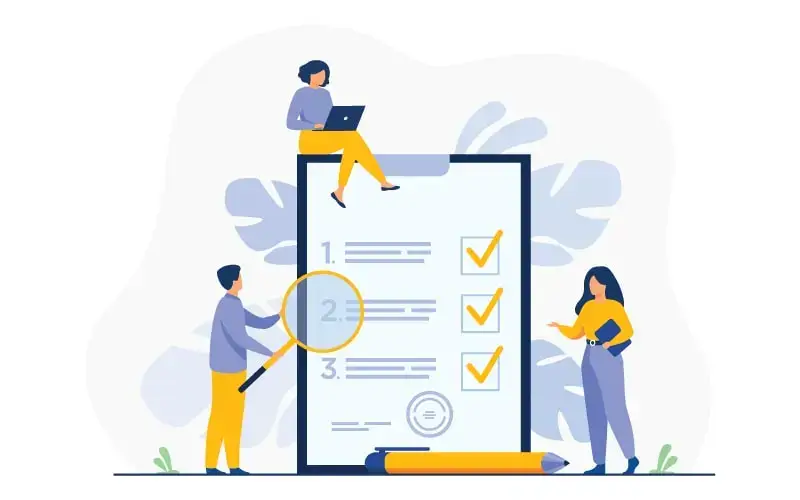
App Marketing
To ensure the app reaches its target audience, effective app marketing strategies are essential. This includes social media marketing, content marketing, influencer partnerships, and paid advertising. A well-executed marketing plan can significantly boost the app’s visibility and user acquisition.
User Feedback
Listening to user feedback is invaluable for the continuous improvement of the app. By analyzing reviews and user behavior, developers can identify areas for enhancement and implement necessary changes. User feedback plays a pivotal role in the app’s iterative development process.
Iterative Development
Iterative development is the ongoing process of refining the app based on user feedback and performance data. This approach allows developers to make incremental improvements, ensuring the app remains relevant and competitive in the market.
Monetization Strategies
For many developers, generating revenue is a key goal. Monetization strategies can include in-app purchases, subscription models, ads, and premium versions of the app. Selecting the right monetization strategy is crucial for the app’s financial success.
Maintenance and Updates
Regular maintenance and updates are necessary to keep the app functioning smoothly and securely. This includes fixing bugs, improving performance, and adding new features. Consistent updates help in retaining users and keeping the app competitive.
Cross-Platform and Native App Development
When planning the development approach, it’s important to consider whether to build a cross-platform or native app. Cross-platform development allows the app to run on multiple operating systems with a single codebase, while native app development involves building separate apps for each platform (e.g., iOS and Android) to take full advantage of platform-specific features.
Hybrid App Development
Hybrid app development is another approach that combines elements of both native and web applications. This method can offer a balance between performance and cost, allowing developers to use a single codebase while providing a near-native user experience.
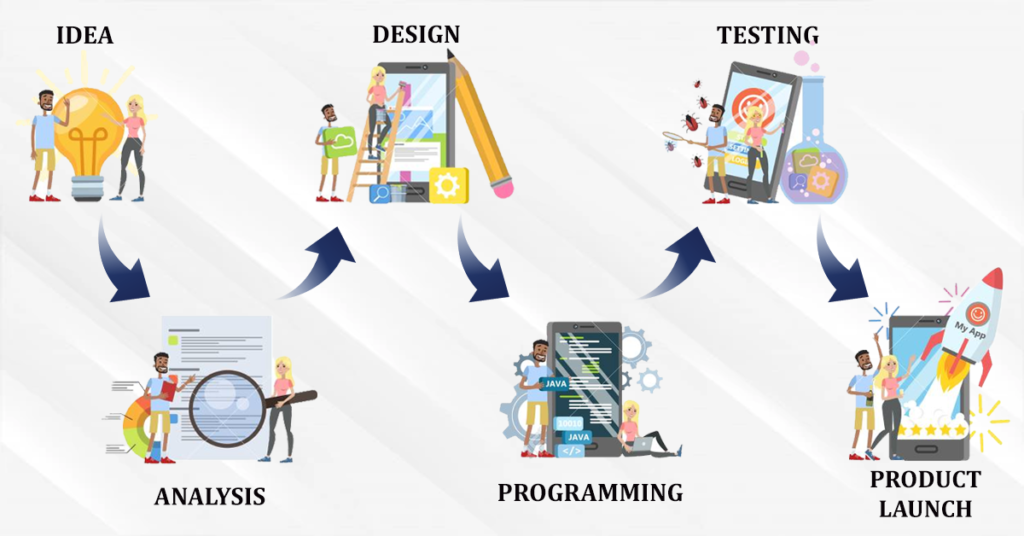
Security in App Development
Ensuring the app’s security is paramount. Security in app development involves implementing measures to protect user data and prevent unauthorized access. This includes data encryption, secure authentication, and regular security audits.
App Analytics
Finally, leveraging app analytics is crucial for understanding user behavior and making informed decisions. App analytics tools provide insights into how users interact with the app, which features are most popular, and where users encounter issues. This data-driven approach helps in optimizing the app and enhancing user satisfaction.
Conclusion
The journey from an idea to an app is a complex but rewarding process that involves multiple stages. From conceptualization and market research to design, development, testing, and deployment, each phase requires careful planning and execution. Post-launch activities such as marketing, user feedback, iterative development, and maintenance ensure the app’s success and longevity.
By understanding and embracing each step of the app development process, developers can transform innovative ideas into successful mobile applications that meet users’ needs and stand out in a competitive market.
Also Read – Educational Resources In NoCode

